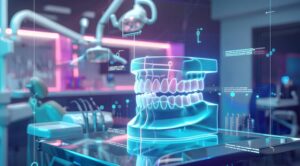Preserving natural tooth structure can be done through Minimally Invasive Dentistry (MID). MID is a modern approach that focuses on preserving as much of the natural tooth structure as possible. This philosophy contrasts with traditional methods that often involve extensive removal of tooth material. The rise in popularity of MID is driven by advancements in dental technology, a better understanding of dental diseases, and a growing emphasis on patient comfort and long-term oral health.
The Philosophy Behind Minimally Invasive Dentistry
The core principle of MID is to retain healthy tooth structure while effectively treating dental issues. This approach is based on early detection, prevention, and conservative treatment. By addressing dental problems at their initial stages, dentists can avoid more invasive procedures that might compromise the integrity of the tooth.
Techniques and Procedures in Minimally Invasive Dentistry
Early Detection and Diagnosis:
- Digital Imaging: Advanced imaging technologies, such as digital X-rays and intraoral cameras, allow for precise detection of dental issues at their earliest stages. These tools provide high-resolution images that help dentists identify problems that might not be visible to the naked eye1
- Laser Diagnostics: Lasers can detect cavities and other dental issues without the need for invasive probing. This method is not only accurate but also comfortable for patients2.
Preventive Measures:
- Fluoride Treatments: Fluoride helps in remineralising enamel and preventing decay. Regular fluoride treatments can strengthen teeth and reduce the risk of cavities3.
- Sealants: Dental sealants are thin coatings applied to the chewing surfaces of the back teeth. They act as a barrier, protecting enamel from plaque and acids4.
Conservative Restorative Techniques:
- Air Abrasion: This technique uses a stream of air and tiny particles to remove decay. It is less invasive than traditional drilling and preserves more of the healthy tooth structure5.
- Composite Resins: These materials bond to the tooth structure, allowing for smaller and more conservative restorations. They also match the natural colour of teeth, providing aesthetic benefits.
Minimally Invasive Surgical Procedures:
- Laser Dentistry: Lasers can be used for a variety of dental procedures, including cavity removal, gum reshaping, and treating periodontal disease. Laser treatments are precise, reduce bleeding, and promote faster healing.
- Microdentistry: This involves the use of small, precise instruments to remove decay and prepare teeth for restorations. The goal is to minimise the removal of healthy tooth structure.
Benefits of Minimally Invasive Dentistry
Preservation of Natural Tooth Structure:
By focusing on early detection and conservative treatments, MID helps in preserving the natural structure of teeth. This approach reduces the need for extensive restorations and maintains the strength and integrity of the tooth.
Reduced Discomfort and Recovery Time:
Minimally invasive procedures are generally less painful and require shorter recovery times. Patients experience less discomfort during and after treatment, allowing them to return to their normal activities more quickly.








